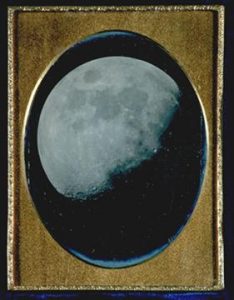
![]() The daguerreotype process, named for its French inventor, Louis Jacques Mandé Daguerre, was one of the first forms of photography. Images were exposed in-camera on sensitized metal plates coated with a thin layer of highly-polished silver, then developed, fixed, and mounted in protective cases. Since no negatives were used, daguerreotypes are one-of-a-kind images.
The daguerreotype process, named for its French inventor, Louis Jacques Mandé Daguerre, was one of the first forms of photography. Images were exposed in-camera on sensitized metal plates coated with a thin layer of highly-polished silver, then developed, fixed, and mounted in protective cases. Since no negatives were used, daguerreotypes are one-of-a-kind images.
Between 1839 and the early 1850s, the heyday of the medium, daguerreotypes were used primarily to make studio portraits. Sitters posed with their heads held still by metal braces and their hands perched on the arms of chairs or holding objects like books. Because of the bulky equipment, complicated process, and long exposure times, outdoor scenes were much less common. Despite the difficulty of viewing an image on a mirrored surface, daguerreotypes were valued for their amazing detail.